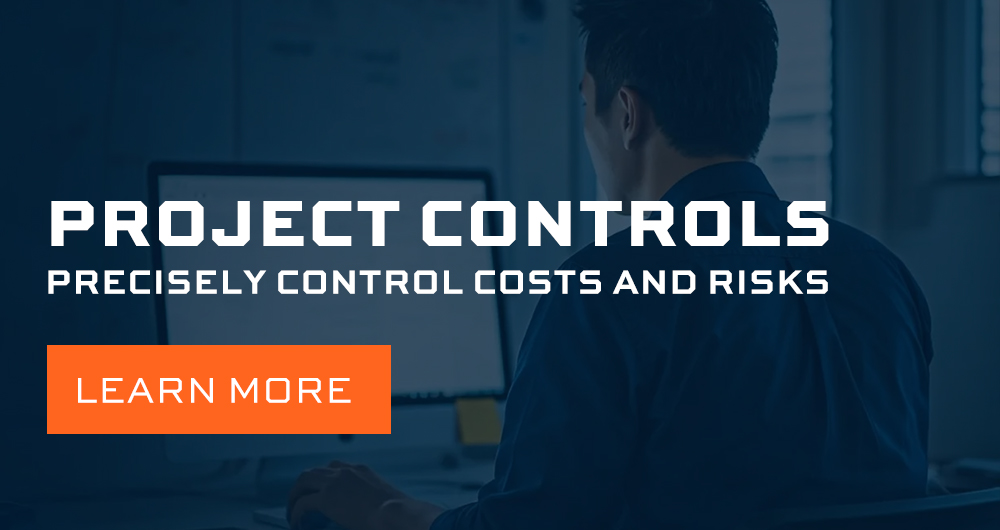When it comes to construction data, context adds to the understanding of what those numbers are showing you. That’s true of the sometimes-misunderstood metrics like cost performance index (CPI).
Most people would rightly assume it has to do with measuring the budget adherence of a construction project. Yet, like the other earned value management (EVM) metrics of which CPI is a part, it’s more than that.
Knowing how it changes, why that matters, what it’s telling you about your project at a given moment, and how it can serve as a warning system all provide the context necessary to see where the trends and issues are and to make better informed decisions. To be clear, CPI is just one data point within EVM’s broader group of metrics that show where a project is and where it’s headed. But it’s worth exploring on its own to zero in on the whats, whys, and hows of your project’s financial performance.
What exactly is a cost performance index?
CPI answers the question: How efficient is our budget? Or put another way, how well are we spending our money?
Monitoring CPI metrics can give you the reassurance that the project is financially on track or a heads up that there may be signs of deviation in response to a risk factor. It gives you a chance to investigate the possible cause and take action to mitigate its effect on the project.
Determining your cost performance index is nothing more than a simple ratio equation: CPI = EV / AC. EV is the earned dollar value of work done to a certain point and AC is the actual (burned) cost of work done to that point; each of these two source values are calculated using real-time data from the field. The CPI equation can be run anytime to give you an up-to-the-minute assessment of your project’s financial performance. The resulting CPI values tell you how it’s doing:
- When the value is greater than 1 (CPI > 1) your project is below budget, a sign of cost efficiency so far.
- When the value is less than 1 (CPI < 1) your project over budget at this point, indicating cost inefficiency.
- When the value equals 1 (CPI = 1) you have a project on budget so far (not a frequent occurrence).
Perhaps counterintuitively, the resulting CPI value is expressed as a percentage (or decimal figure) rather than a dollar figure. This value is not static, but rather fluctuates throughout the project’s life cycle as work is performed and as risk factors impact it.
How much fluctuation is normal?
Your cost performance index is constantly responding to data input from the field, fluctuating within what’s called an operating range. But what is considered a “normal” or stable range can vary from project to project. It must be established before construction begins among those who are managing the build. Because each build is unique, it will naturally be subject to a distinct set of factors that can impact your cost performance index.
Projects that are likely to be exposed to severe, frequent or long-term risks may have a wider range to accommodate for the expected steeper swings. Conversely, a narrower range may be set for projects more likely to experience fewer impactful risk factors, such as indoor construction or shorter-term builds that present less opportunity for risks to impede progress.
Deviations that swing well outside the established ranges would demand attention and possibly correction. Look at other performance metrics, such as schedule performance index (SPI) and cost variance (CV) to see if and how they corroborate what the CPI is showing.
A couple of things to note: You don’t want such an unnecessarily narrow operating range that you’re constantly on alert, assessing the situation and finding nothing but false alarms. Also, sometimes CPI values may be misleadingly high (well below budget). In this case, a miscalculation or incomplete task can trigger the high value, which in turn could wind up hiding a problem waiting to happen that will show up in a declining CPI.
What can cause the CPI to fluctuate within and outside of the operating range?
Cost performance index metrics automatically adjust as data is updated in the system. This ever-changing data can move the CPI needle in either direction. So what kinds of things cause these financial performance peaks and valleys? A wide array of external and internal events and situations are at play.
External influences are generally beyond anyone’s control and can only be mitigated with solid contingency planning or real-time decision making and action. The industry has been experiencing some of these lately, including supply chain bottlenecks, material shortages, lack of skilled labor, rising equipment and material costs (you could include higher labor costs as well), and harsh weather events.
Internal influences are going to be more process-related or situational. They’re more likely to be within your ability to manage and even prevent, given enough advance warning. In this category would be unchecked scope creep and changes, inadequate staffing of on-site crews, using manual planning methods or outdated software, errors in process or tasks, and inadequate risk management and backup plans for external risks.
How is CPI used?
Planning. Your cost performance index provides actionable insights you can use for better project planning. For current projects, one reliable way to plan around the above influences is to look at the paths of your CPI from past similar projects and determine what risk factors to plan for that can affect your project’s financial health. Overall, what trends did you notice? How did any contingency plans you implemented lessen the impact on the project’s budget? Were you blindsided by an event or situation — especially if it could have been flagged in advance by a monitored CPI — that may surface on your current project that you should plan for? How did you react to them? Was the operating range appropriate given the type and degree of external and internal influences?
At the completion of your current project, conduct a retrospective of its financial performance as a way to proactively plan for anticipated risks for upcoming projects in your portfolio. Use the above questions as a basis for your assessment. Ideally these learnings build on themselves, becoming more refined as you trust and rely on what the CPI shows.
In the end, use your CPI as a guide to continually improve project planning and to be flexible yet responsive as the project progresses.
Risk management. In addition to assisting in the planning process, CPI is just as capable in helping to manage risk. Serving as a real-time alert system, CPI can warn when something is veering in a direction requiring attention or immediate action. This gives project managers the opportunity to respond to attention-worthy conditions as they develop.
Paying proactive attention to fluctuation trends, before it’s been flagged for attention, does two things. One, you may notice conditions developing that could potentially lead to cost overruns, giving you time to investigate and possibly course correct. And it can be used as a basis for forecasting the financial impact of a possible issue to address, giving enough of a heads up to begin putting contingency plans in place.
Related to the project planning use case above, your cost performance index, in combination with other earned value metrics, can be used to create risk management plans. With capital projects being subject to a seemingly endless list of risks, It’s when those risks are not met with the appropriate contingency plans that those dreaded cost overruns are all but guaranteed. That’s what makes CPI’s sensitivity to risk factors a good thing. Even without ready-to-launch backup plans in place, this metric’s responsiveness is enough to start waving that red warning flag with enough time and opportunity to collectively evaluate what the connected analytics data shows and come up with an informed contingency plan on the spot.
Collaboration. Collaboration is more productive when everyone can access the same project data, including cost performance index. CPI provides a standardized way for everyone to understand what’s happening with costs throughout the project life cycle. It gives visibility into where those costs are going up or down and which may require attention at any given moment.
Having that real-time insight into how everyone’s work is executing against the original budget provides context for decision making and course correction. And as we noted above, seeing how the CPI vacillates and reacts to unexpected risks facilitates a collaborative approach to creating a backup plan in real time.
That’s been a challenge in projects where data is siloed among disconnected systems, unable to deliver critical real-time project insights. Technology that supports connected analytics can produce reports that project team members and stakeholders use to assess a project’s cost efficiency. Even more essential, some software can be set up to prompt a new report for certain team members when CPI deviations go above or below a set parameter, enabling them to evaluate the data and collaborate on next steps.
Why does CPI matter?
Cost overruns are quite common in capital projects. Much of this can be attributed to a lack of real-time performance metrics and an inability to detect and therefore manage developing risks.
Especially at a time when inflation, supply issues and skilled labor shortages are all conspiring to throw project performance off course, the data-based insights that can be gained by analyzing and acting on CPI metrics has probably never been more important or relevant. Unfortunately, a lot of construction companies are deficient in the real-time data they need to accurately assess project performance — making it that much harder to respond to risks as they occur, and that much more likely that cost overruns will result. It’s not only a major risk to their projects, it’s a major risk to their business.
How can you best capture and track your cost performance index so you can gain the above actionable insights while avoiding cost overrun risks? InEight connected analytics reporting helps you make sense of and act on the rich value of your CPI and other performance metrics. When you schedule a demo, you can see how efficiently you can manage your project costs for more predictable outcomes.




